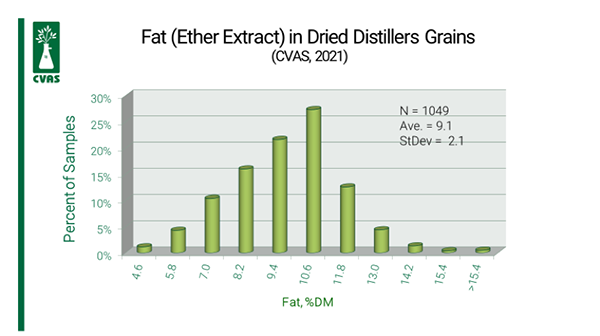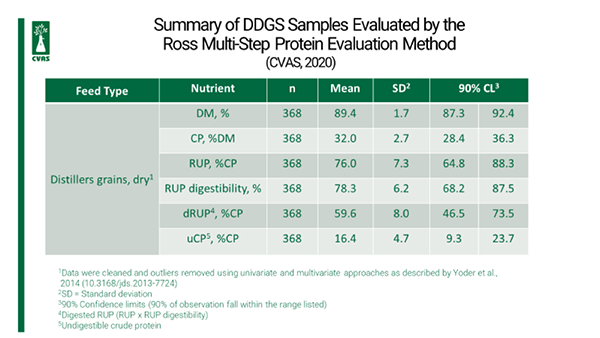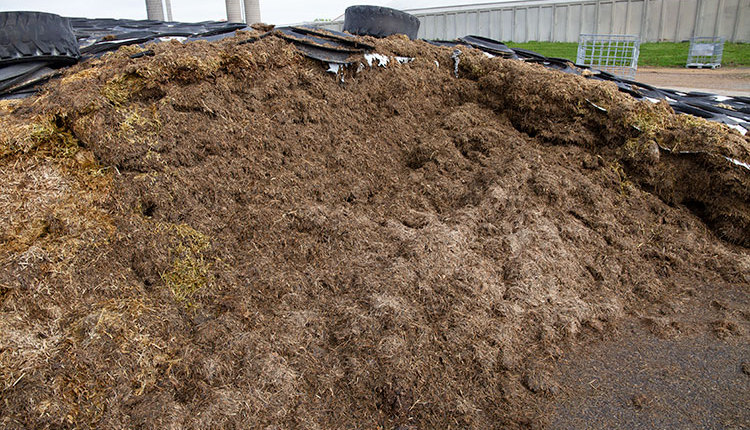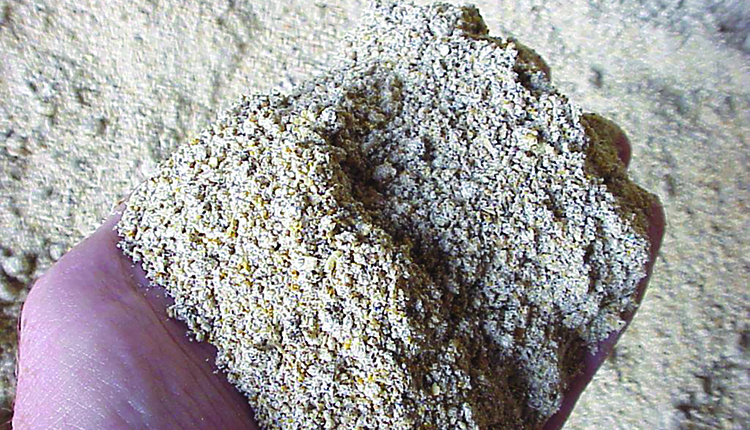
Dried distillers grains, with or without solubles (DDGS or DDGs), is a fermentation coproduct that is commonly used in livestock rations in the U.S. It became much more available after Congress passed the Renewable Fuel Standard in 2005 and expanded it in 2007. With those laws in place, the availability of distillers grains exploded and today the U.S. generates just short of 40 million metric tons of the product annually.
Approximately 98% of the available distillers grains are generated from dry milling of corn for ethanol production. Economics has driven a focus on efficiency in converting corn to ethanol. This has led to changes in the character of distillers grains that are a by-product of this process. Corn distillers, as a product, is more consistent today than it was 10 to 15 years ago as a result.
Variability still remains
Even so, dried distillers grains still remain variable in part due to how they are generated. Dried distillers grains may have the solubles from the distillation process added back. These solubles, often referred to as “corn syrup” include many of the fermentation by-products and spent yeast cells from the fermentation process.
Corn distillers grains may also be processed further to remove some of the oil or in a manner that yields a higher protein product. These variations in product manufacture are lumped together in the category of dried distillers grains. This leads to variability in nutrient specifications that must be accounted for by nutritionists and in the determination of economic value of the product.
A comparison of summary statistics from lab evaluations shows change in the average nutrient value of distillers over the last 15 years. A summary of data from Dairy One during 2006 and 2007 shows an average protein value of 30.9% (+/-5.4%) compared to Cumberland Valley Analytical Services (CVAS) data for 2021 of 32.0% (+/-2.2%). The average fat (ether extract) value from Dairy One for 2006 to 2007 averages 13.0% (+/-3.2%) versus CVAS data for 2021 of 9.1 (+/- 2.1%). These days, distillers is in general higher in protein and lower in fat with less variability than product in the marketplace 15 years ago.
Distribution graphs of CVAS laboratory chemistry data provide a visual of the variation of protein and fat in dried distillers grains. Variation in these key nutrients may be significant. It is important to understand the nutrient profile in distillers being fed. Using book values for key nutrients such as protein and fat brings uncertainty to purchasing decisions and in diet formulation. Managing quality control when feeding distillers is accomplished in part by working with brokers and feed dealers that ensure consistent quality as part of their product service provision.


A key characteristic of dried distillers grains is the higher level of rumen bypass protein. The use of dried corn distillers grains can be an economical feed source to meet diet formulation objectives. The table below summarizes the key bypass characteristics of dried corn distillers evaluated by the Ross multi-step protein evaluation method at CVAS. This assay uses a combination of rumen fluid and enzyme treatments to model nutrient availability in the dairy cow. While this assay may not be precise to what happens in the ruminant digestive tract, it is a valuable ranking tool to assess differences in dried distillers corn quality.
Observations from this data are that distillers do provide a reasonable level of bypass protein that is digestible in the intestine. Unlike many of the distillers from years past, the amount of “burnt” or unavailable protein in today’s dried corn distillers is relatively low. This is demonstrated from the average uCP (undigestible crude protein) at 16.4% of the total crude protein. Note the larger standard deviations for rumen undegraded protein (RUP), RUP digestibility, and dRUP.

Dried corn distillers is a common and economical source of nutrients for ruminant diets. The character of dried corn distillers has improved over the last several decades. While it has an improved and more consistent nutrient profile, there is still much variability across manufacturing processes.
Look to your product supplier to be the gatekeeper of quality and consistency. If you are using significant amounts of corn distillers in cow diets, work with your nutritionist to develop an approach for quality control using the feed lab to evaluate key nutrients.








